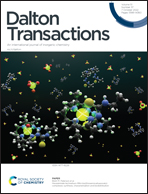Hollow CoFe-based hybrid composites derived from unique S-modulated coordinated transition bimetal complexes for efficient oxygen evolution from water splitting under alkaline conditions†
Abstract
The oxygen evolution reaction (OER) is an important reaction in water splitting. However, the high cost and slow-rate catalysts hinder commercial applications. Although an important process for manufacturing of hollow structures, it is difficult to construct complicated hollow structures with an excellent and regulable shape for multi-component materials. In this study, we demonstrate that sulfur-Co,Fe bimetallic nitrogen carbon hollow composite hybrids (x-S-CoFe@NC) can be synthesized by regulating the amount of sulfur and using the hydrothermal method. For OER, 32-S-CoFe@NC exhibits excellent electrocatalytic activity with a low overpotential of 232 mV, which is higher than those of 0-S-CoFe@NC (270 mV), 23-S-CoFe@NC (247 mV), and RuO2 (243 mV) catalysts at 10 mA cm−2. In addition, with air as the cathode, a rechargeable Zn–air battery with outstanding long-life cycling stability for 80 hours based on 32-CoFe@NC + Pt/C is proposed. The advanced technique described here supplies a new route for preparing hollow transition bimetal carbon hybrids with an adjustable composite arrangement for electrocatalysis and water splitting.



 Please wait while we load your content...
Please wait while we load your content...